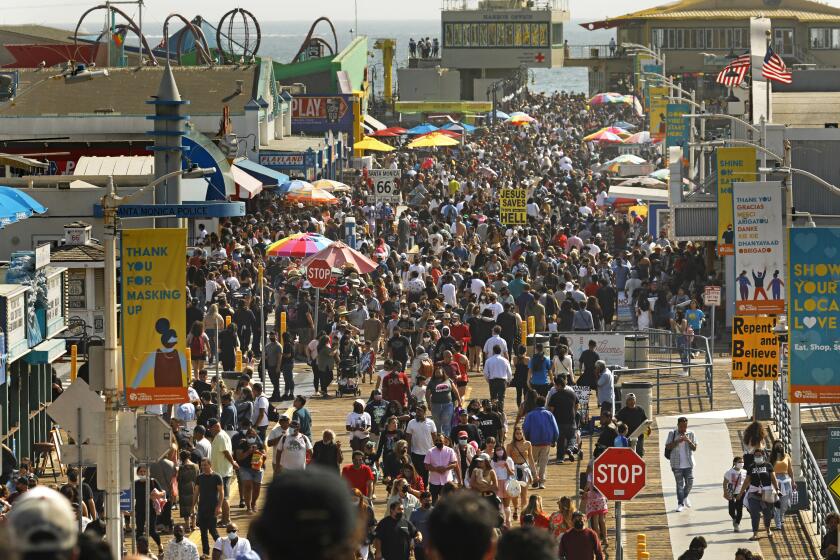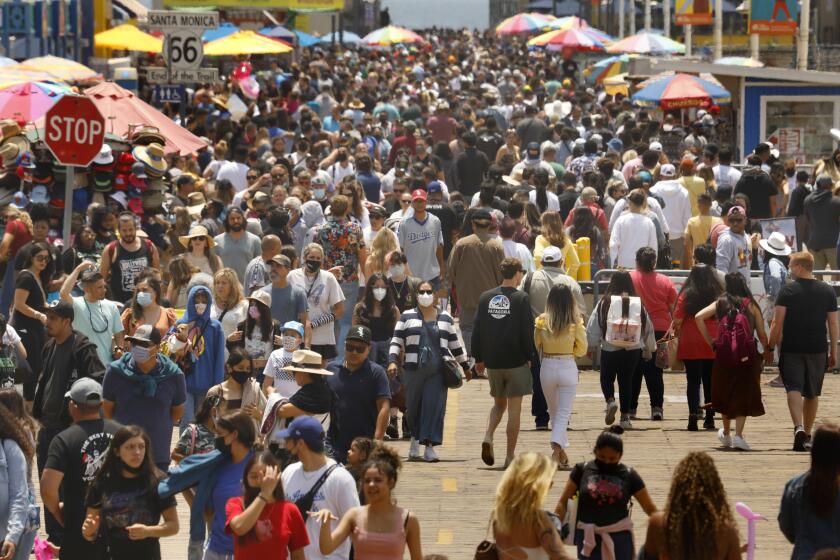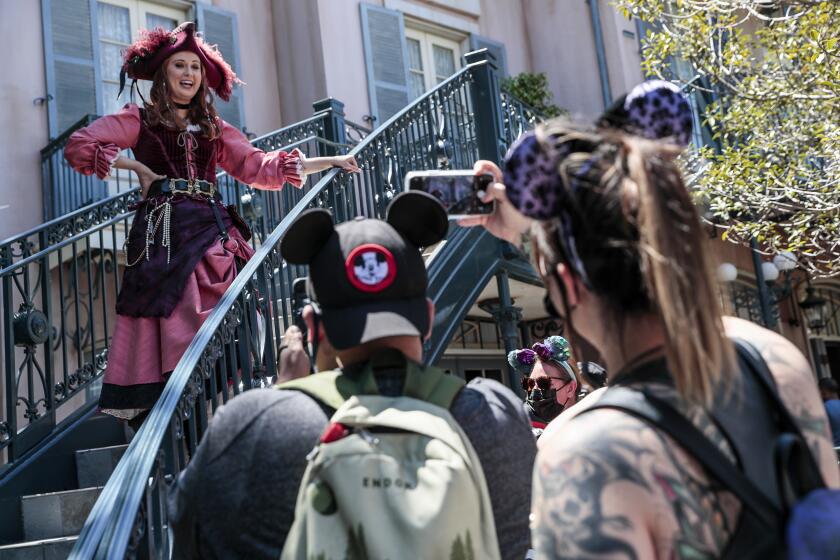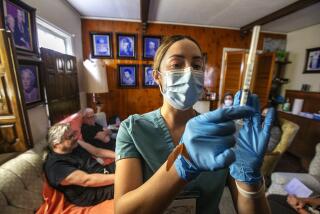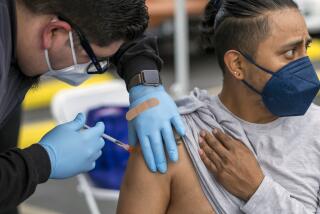70% of adult Californians are partially vaccinated against COVID-19
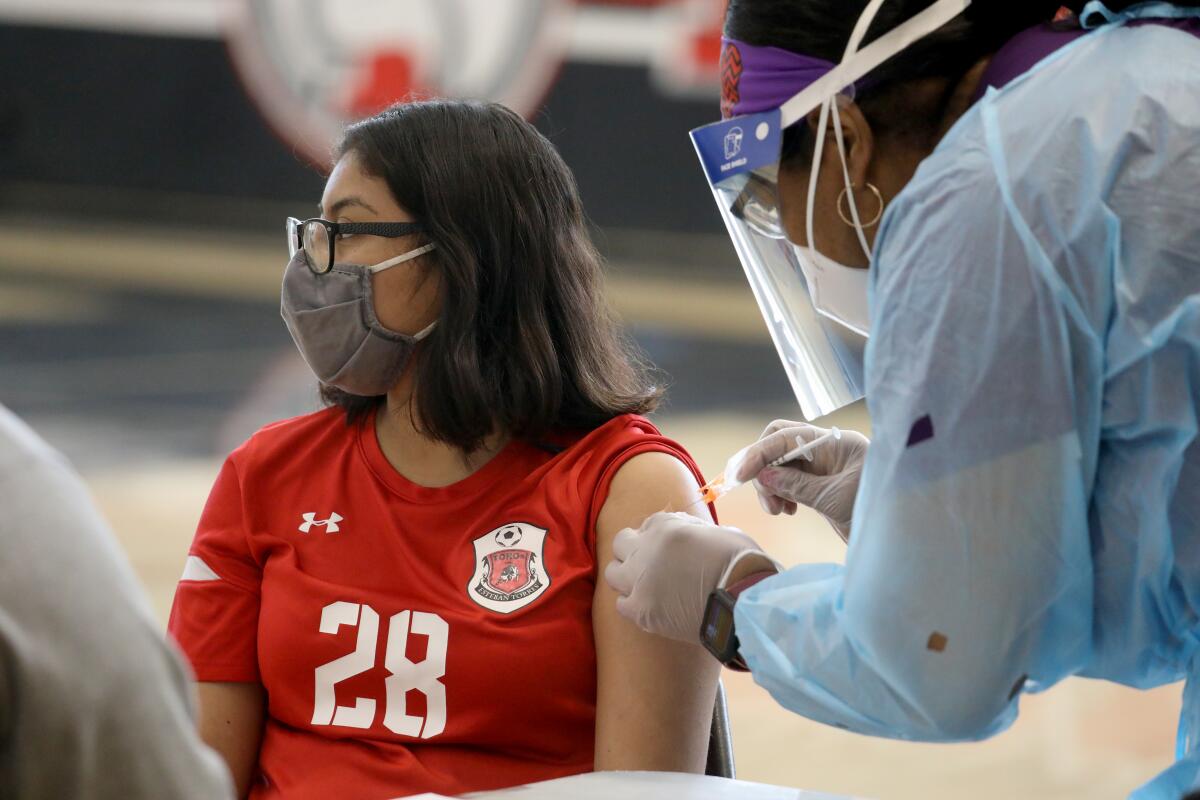
- Share via
One month ahead of the target date set by the Biden administration, California has now at least partially vaccinated 70% of its adult residents against COVID-19.
Clearing that hurdle is a vital development as the state prepares to fully reopen later this month.
The progress, however, comes alongside a significant drop in the number of people seeking their first vaccine shot.
At the peak, providers statewide were administering about 400,000 vaccine doses per day. Over the last week, an average of about 141,000 shots have been doled out daily, according to data compiled by The Times.
Although dose figures gathered over the weekend might be low due to reporting lags because of the holiday, Gov. Gavin Newsom said last week that the state was seeing a significant drop in people starting their vaccine regimens. He noted the trend meant an even larger drop was on the horizon.
“It’s those first doses, those first shots, that are way down,” he said. “And so you can see that cliff coming in the next week or two.”
After 14 months of life torn asunder by the pandemic, the holiday brought relief to Californians who are cautiously resuming the things they normally do, starting with barbecues and trips to the beach.
Although 70.1% of residents 18 and older in the Golden State have received at least one dose, according to the latest data from the U.S. Centers for Disease Control and Prevention, only 54.6% are fully vaccinated — having received the single-shot Johnson & Johnson vaccine or both required doses of Pfizer-BioNTech or Moderna.
Roughly 4.7 million California adults are due for a second inoculation in the days and weeks ahead, federal figures show.
At any rate, California falls short of 80% people vaccinated. To achieve herd immunity, the point at which the larger population is protected against the virus, 80% of residents need to have been vaccinated or have natural immunity.
And with the inoculation campaign now more than 5 months old, gains are harder to come by.
As Newsom recently noted, achieving an initial baseline level of vaccine coverage — 10%, 20%, 30% — “was easy compared to getting from 60% to 70%. Getting from 70% to 80% will be even more challenging.”
“We can’t afford to run ... the 90-yard dash,” he said during a briefing Thursday. “We’ve got to finish the job.”
California’s ‘Vax for the Win’ program seeks to boost interest in vaccines by offering cash rewards. If you’ve gotten a shot, you’re already eligible.
To reverse the downward trend in first vaccination shots, state officials have unveiled a $116.5-million vaccine incentive program called “Vax for the Win.”
All Californians who have received at least one vaccine dose will be automatically entered into a series of drawings this month for the chance to win one of 10 $1.5-million prizes, or one of 30 $50,000 awards.
And 2 million vaccine recipients (those with a first shot as of May 27 or later) will also be eligible for either a $50 prepaid gift card or a $50 grocery card.
The first drawing will be held Friday, when 15 Californians will win $50,000.
“Increasingly, you’re seeing a number of states, five or six, with these larger cash grants, and we have seen some enthusiasm in those states,” Newsom said. “And we want to see if we can replicate that enthusiasm here.”
A California workplace safety board on Thursday is scheduled to consider whether to relax mask and physical distancing rules for workers.
Despite the recent slowdown in the pace of vaccinations, California continues to measure up well when compared with other states.
California ranks 12th in terms of the share of its adult population that is at least partially vaccinated, according to the CDC. At the top of that leader board are Vermont with 82%; Hawaii, 80.5%; and Massachusetts, 78.7%.
Roughly 71.2% of Pennsylvania adults have received at least one dose, as have 67.9% of those in New York, 59.9% in Florida and 57.1% in Texas.
Early last month, President Biden called for 70% of American adults to receive at least one dose by July 4, and for 160 million adults to be fully vaccinated by that point.
“Let’s celebrate our independence as a nation, and our independence from this virus,” he said at the time.
According to the latest CDC data, more than 133 million adult Americans, including 16.7 million Californians, have been fully vaccinated.
Until June 15, Disneyland is for California residents only due to COVID-19 pandemic restrictions. Cast member insights on a day experiencing reduced-capacity lines.
California is also continuing to see progress in its pandemic metrics, boasting — as it has for weeks — one of the lowest coronavirus case rates in the country.
The number of Californians hospitalized with COVID-19, which peaked above 21,000 during the height of the state’s fall-and-winter surge, is also receding.
On Monday there were 1,069 such patients statewide — a roughly 23% decrease from two weeks prior.
“The most powerful protection you can have is the vaccine, so please consider getting the COVID-19 vaccine as soon as you can,” Los Angeles County Public Health Director Barbara Ferrer said in a recent statement.
Until June 15, Disneyland is for California residents only due to COVID-19 pandemic restrictions. Cast member insights on a day experiencing reduced-capacity lines.
As the pandemic recedes, California continues to reopen its economy.
In the penultimate weekly update of the state’s COVID-19 reopening roadmap, four more counties — Marin, Monterey, San Benito and Ventura — moved into the least-restrictive yellow tier.
Counties within that category, of which there are now 19, can allow most businesses to operate indoors with some modifications.
Reaching that level requires counties to record — for two consecutive weeks — an adjusted daily case rate of fewer than 2 per 100,000 people, a rate of positive test results of less than 2%, and a less than 2.2% rate of positive test results in communities heavily impacted by the virus.
Another four counties — Nevada, Sacramento, San Joaquin and Solano — also progressed Tuesday into the orange tier, the second-least-restrictive tier on the reopening ladder.
Thirty-five of California’s 58 counties now call the orange tier home. Four remain in the more restrictive red tier, which is the second-most-restrictive tier, but none are in the strictest purple tier.
The tier system is slated for retirement on June 15, when state officials say they will lift coronavirus-related capacity restrictions and physical distancing requirements for attendees, customers and guests at almost all businesses and other institutions, and allow people who are fully vaccinated to go without masks in most situations.
“Though it is only two weeks until full reopening, every day matters for our businesses,” Ventura County Executive Officer Mike Powers said in a statement Tuesday. “Expanded customer capacity will help impacted businesses. We appreciate the hard work of our community members in getting us to this point.”
More to Read
Sign up for Essential California
The most important California stories and recommendations in your inbox every morning.
You may occasionally receive promotional content from the Los Angeles Times.
